How To Fish Rainbow Lake
Rainbow Lake Fishing Report
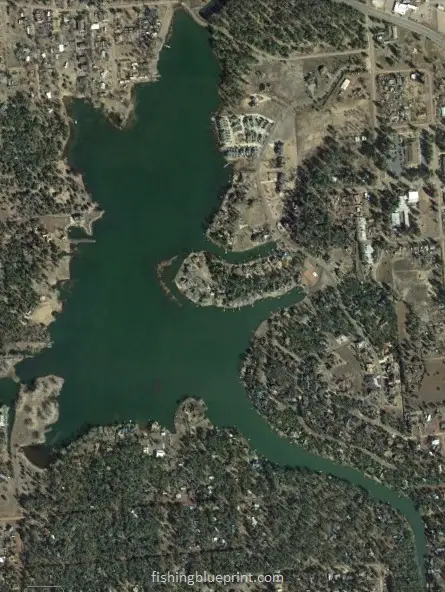
Rainbow Lake is a small community lake in the White Mountains for northeast Arizona and sits between the towns of Show Low and Pinetop, making it 186 miles from Phoenix, Arizona.
Overall it’s a popular lake especially on the weekends and during the summer. In this post, you’re going to be given the blueprint to fish this lake.
So what are the best tips for fishing Rainbow Lake? There are three important factors you must know if you want to know how to fish Rainbow Lake successfully. First, you need to know what kind of fish is in Rainbow Lake. Second, it’s important for you to know which part of the lake each species can be found in. Lastly, knowing what are the best baits that work on Rainbow Lake is vital. However, tactics, baits, and locations will be different for each type of fish that you target. So let’s talk about the steps you need to take in order to give you the best chance of catching a fish on Rainbow Lake.
WARNING: There’s a lot of information about this subject you’ll probably want to come back to. No one expects you to remember all these tips. We know your time is precious, so we really tried to over-deliver in value for you. Additionally, we frequently update reports like this, so you’ll want to stay up to date with any changes or additional tips we include for you.
We found that the easiest way to save and bookmark this report so you can come back to it later is to share it on your favorite social media platform, especially if you use your phone to get important tips like the ones in this report here…
Click on your favorite social media buttons to remember this page now!
About Rainbow Lake
Rainbow Lake is a shallow body of water with the average depth being 7 feet and a maximum depth of 15 feet when the lake is completely full. Being 1.5 miles long and .3 miles across, the lake spans over 116 acres. This is a reservoir and plays a vital role in water retention during the summer. Located in the eastern part of Arizona, Rainbow Lake gives locals and visitors the opportunity to test their luck in catching one of the many game species this lake has to offer.
Important Lake Warnings
Algae blooms may be present which may affect fishing, swimming, and water contact in general.
Maximum 10-HP for gas engines on the lake.
If you are fishing and camping, fire bans may be in effect due to the ongoing drought conditions.
What Kind Of Fish Are In Rainbow Lake?
- Rainbow Trout
- Tiger Trout
- Largemouth Bass
- Smallmouth Bass
- Bluegill and Sunfish
- Catfish
Rainbow Lake Fishing Tips & General Strategies
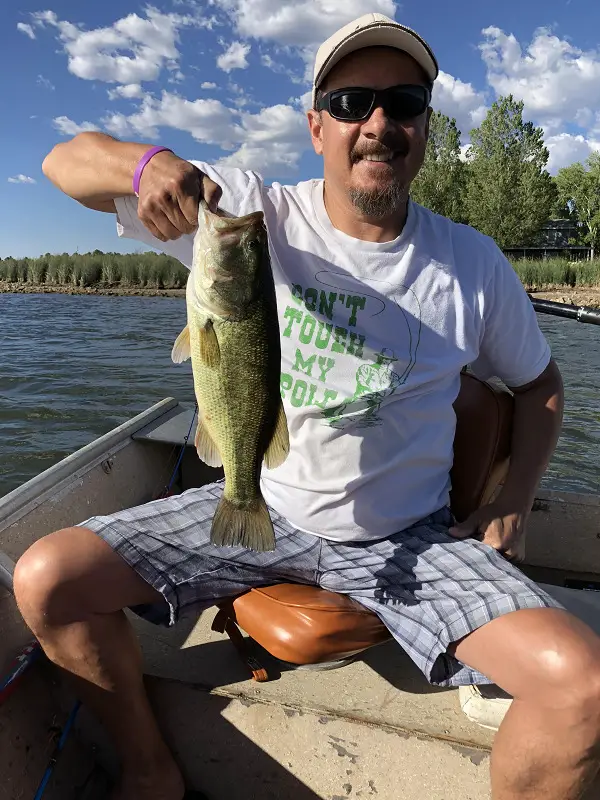
It can be a challenge to break down Rainbow Lake and decide to get started.
First off, the majority of the shoreline is private property, so fishing is primarily done by boat or kayak.
Getting started, Rainbow Lake is a slightly stained water lake and fishing can be tough. Ever since the city stocked the lake with grass carp it really decreased the clarity.
Along with that, this lake is really shallow and has a ton of vegetation in it.
Many call Rainbow Lake a “mini-Clear Lake” that is found in northern California for its similarity of being shallow, a mix of rock and grass, and lined with docks.
There are two primary types of fishing structures in Rainbow Lake; hard structures and vegetation. The hard structure consists of boulders, rock piles, hardwood timber (either in the form of laydowns or vertical timber), man-made chunk rock banks, docks, and water retention dams. Despite being a high altitude mountain lake it is very shallow and the abundant vegetation that grows in this lake in the form of submerged grass beds, reed patches, tule thickets, and sometimes even floating vegetation mats.
Since there are a ton of docks to fish at Rainbow Lake, please remember to respect the owner’s property.
Aside from rainbow trout, most other anglers will target bass, bluegill, and catfish. Although someone illegally stocked northern pike in this lake as well.
Bass, bluegill, and catfish will spawn in the spring. Bass will spawn in 1’-15’-feet of water notably on rocky structures, gravel flats, humps, and small creek inlets and cuts.
Trout can be found up shallow in the winter and spring. However, trout will often suspend over deep water in the center of the lake during the summer afternoons..
Trout can be caught from shore, or by boat, kayak, or float tube.
Your best chance of catching deep suspending rainbow trout is by trolling a lure behind your boat or kayak.
>> Learn More – If you want to learn more about how to troll for trout – click HERE
When the summer heat sets in, the bass, bluegill, and crappie will move to deeper water to approximately 15’-30’-feet of water. Focus on drops offs, channels, points, submerged humps.
Deeper area with chunk rock ranging from baseball to basketball size will attract predatory fish like bass, crappie and catfish because it provides a safe area the prey (crayfish, bream, and minnows) can hide.
If you’re interested in learning how to fish for bass there is an article that dives into that exact topic.
But Where Are The Best Places To Fish At Rainbow Lake?
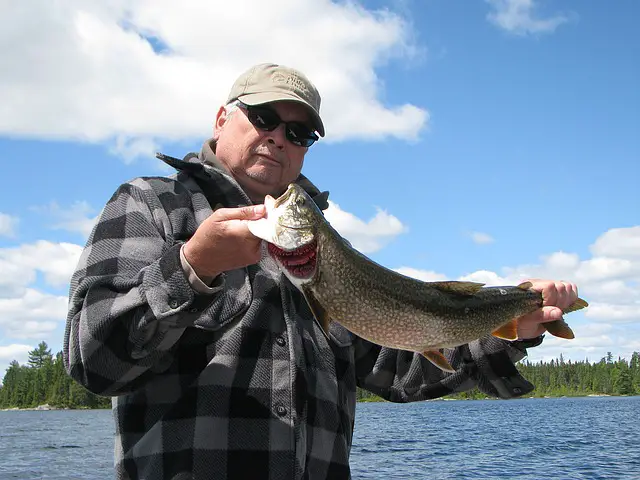
And in no particular order here is that list of the best fishing spots.
DISCLAIMER: The material provided is for general information purposes only. It’s important to understand that any information provided in this article can change at any time. Any maps or graphics featured are not to be used as navigational aids. Fishing Blueprint will not be responsible for any personal injury or property damage from any misuse of the maps or graphics provided. It’s completely impossible to give you every single spot where you can potentially catch a fish. But, what this list does do is to give you a helping hand and narrow it down to the most productive fishing spots.
Northwest Cove
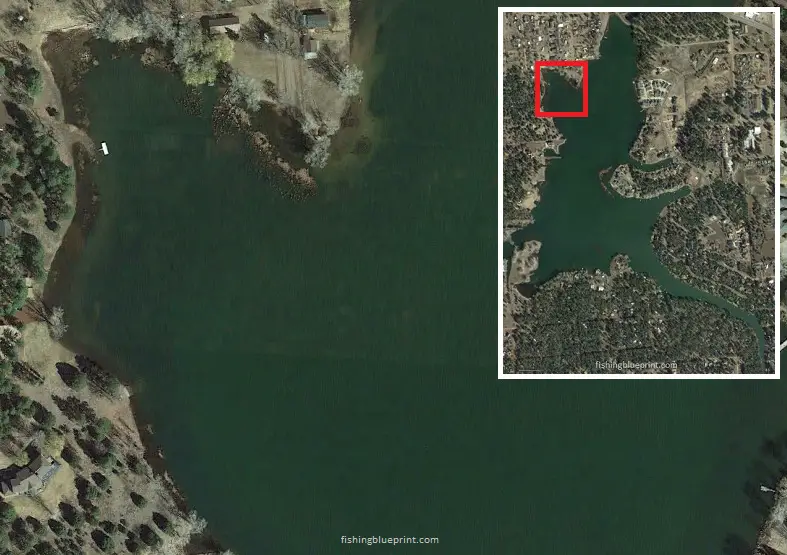
This spot is great because it’s a mixture of standing, submerged vegetation, and chunk rock banks.
In the back of the cove there are tule thickets and 15-20 feet from the shoreline there is largely submerged weedbeds that are present all year long.
In the summer mornings, bass will cruise shallow and when the sun pops over treeline, they will retreat to shaded areas and hide in weed-filled holes and ambush bait.
Parts of the weedline are close to deep water and will often make natural cuts and points. Fishing the outside edges, cuts and points can frequently result in fish being caught.
Lastly, there are some spots within this area that will create large ‘holes’ in the weedbed. These open areas will frequently hold bass and should be fished with a grass flipping jig, wacky rig senko, Mojo rig, Texas rig, weedless tubes or even a drop shot.
If the grass is submerged you fish over the tops with a topwater lure, buzzbaits, frog lure, chatterbaits, or whopper plopper.
Fish the weedline edges parallel with crankbaits, lipless crankbaits, spinnerbaits, frog lures, soft plastic swimbaits, umbrella rigs, swim jigs, underspin jigs or chatterbaits.
There are several hard bottom patches, small rock piles, and high spots on humps that should be checked for fish.
Lastly, there are several small drainage ditches that should be checked for fish as well.
Located: south end of the lake
Structural features: vegetation flat
Best species to target: largemouth bass, smallmouth bass, northern pike
Most effective way to fish this spot: boat, kayak, float tube, shoreline
Western Points & Pockets

The west side of the lake is home to multiple long man-made points with artificial structures associated with it.
The tips of these points are covered in thick chunk rock, in which the size can range from small boulders to basketball-sized rock (also known as “rip-rap”).
The points are characteristically steep and crawfish, bluegill, minnows, and shad seek shelter in this area, which in turn attract bass and other predatory fish.
It’s best to focus your efforts on cuts, piles of rock that create a ‘point on the point’, fishing the largest of boulders in that area, as well as, the transition areas from larger rock to smaller rock size.
During the summer, topwater baits work really well one hour before and after the sunrise/ or sunset. A great midday strategy is to come back to this spot and fish this area.
Effective baits for this area include: topwater lures, buzzbaits in the morning or on cloudy conditions. Crankbaits, spinnerbaits, jerkbaits, chatterbaits, umbrella rigs, underspin jigs, swim jigs, hair jigs, lipless crankbaits, and soft plastic swimbaits perform well here in breezy conditions or during the midday.
In contrast, slower moving baits such as drop shot, football jigs, tubes, wacky rig, Texas rig, Neko rigs, and Carolina rigs can be phenomenal when the conditions are calm or the bass are holding close to the rocks.
Flutter spoons work great in the deepest part of the point or over any secondary structures directly related to the point.
Located: western end of the lake
Structural features: vegetation flat
Best species to target: largemouth bass, smallmouth bass, northern pike
Most effective way to fish this spot: boat, kayak, float tube
Southwestern Flats
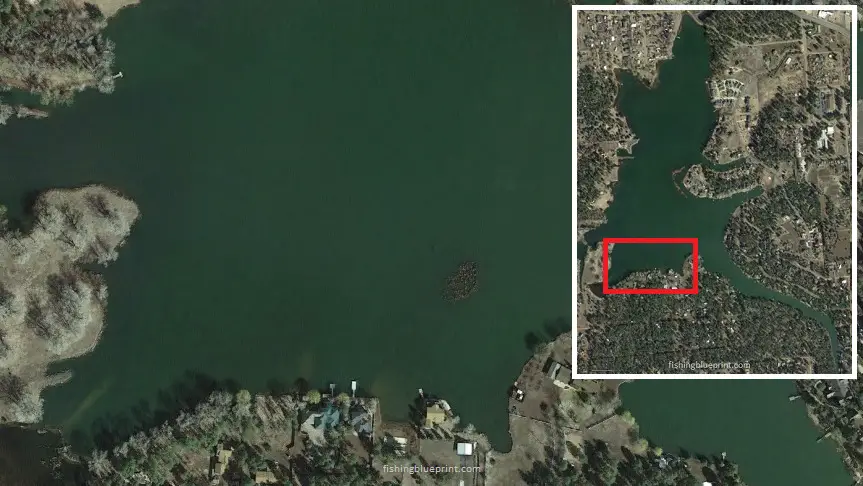
This spot is great because it’s a “grass flat” with an important structure. It’s a fairly large area that has very little change in depth and is covered in vegetation. Sometimes this vegetation can grow to the surface creating a floating mat or canopy.
When the weeds are just developing or dying off, this huge flat fishes very well, creating deep channels in the vegetation. Bass will hide in weed-filled holes and ambush bait.
It’s relatively shallow (between 3 and 10 feet deep) and what makes this spot unique is all the cover the fish can hide in and call home. Parts of the flat close to deep water, if the fish feel threatened, they can retreat to. Fishing the outside edges can frequently result in fish being caught.
Lastly, there are some spots within this area that will create large ‘holes’ in the weedbed. These open areas will frequently hold bass and should be fished with a grass flipping jig, wacky rig senko, Mojo rig, Texas rig, weedless tubes or even a drop shot.
If the grass is submerged you fish over the tops with a topwater lure, buzzbaits, frog lure, chatterbaits, or whopper plopper.
Fish the weedline edges parallel with crankbaits, lipless crankbaits, spinnerbaits, frog lures, soft plastic swimbaits, umbrella rigs, swim jigs, underspin jigs or chatterbaits.
There are several hard bottom patches, small rock piles, and high spots on humps that should be checked for fish.
Lastly, there are several small drainage ditches that should be checked for fish as well.
Located: west end of the lake
Structural features: vegetation flat
Best species to target: largemouth bass, smallmouth bass, northern pike
Most effective way to fish this spot: boat, kayak, float tube, shoreline
Southeast Arm
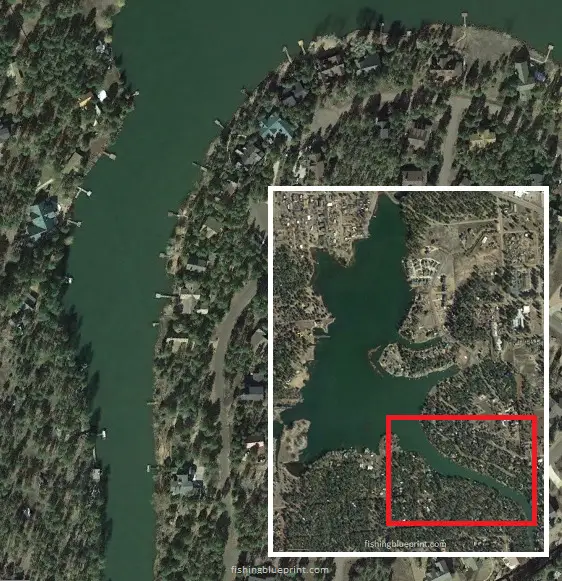
This area features a long narrow channel lined with docks and can provide amazing fishing in the spring through the fall.
When the sun is out, fishing the different docks can often lead to bass being caught.
Effective baits for this area include: buzzbaits, crankbaits, chatterbaits, soft plastic swimbaits, spinnerbaits, jerkbaits, swim jigs, and underspin jigs when the bass are aggressive.
If the bass are timid, then drop shot, tubes, Ned rig, Neko rig, Mojo rig, Carolina rig, and football jigs all work really well.
Located: southeast end of the lake
Structural features: docks
Best species to target: bass, bluegill, catfish
Most effective way to fish this spot: boat, kayak, dock fishing (if you own it)
Bald Eagle Point
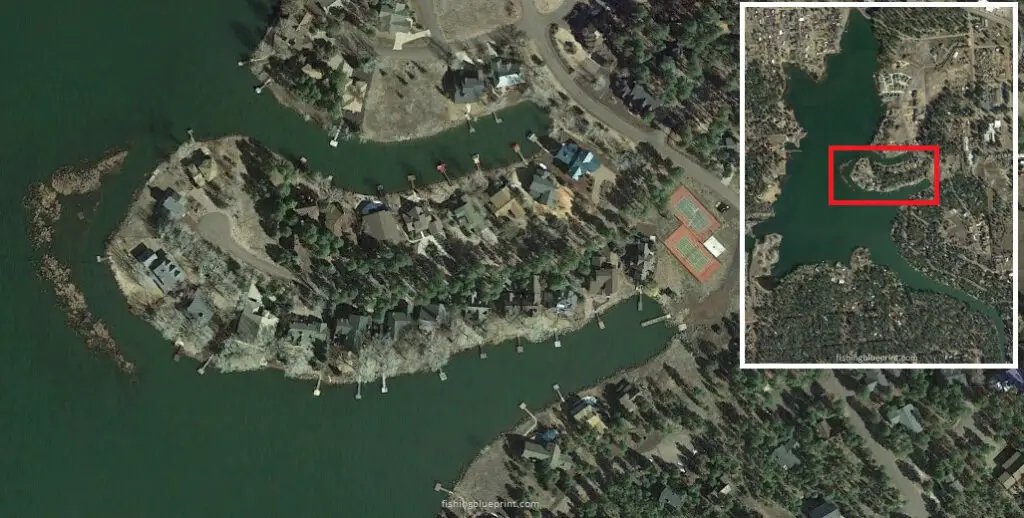
This is a long shallow point with a fairly large vegetation patch on it. Additionally, this area can fish exceptionally well in the summer and early fall mornings with topwater popper, buzzbait, or a frog lure.
The point is sandwiched between a narrow cove to the north and south.
A common strategy is if there are clouds or if it’s windy, then fish the point. If it’s calm or sunny, fish the docks above or below the point.
Sometimes, there are some spots within this area that will create large ‘holes’ in the weedbed. These open areas will frequently hold bass and should be fished with a grass flipping jig, wacky rig senko, Mojo rig, Texas rig, weedless tubes or even a drop shot.
If the grass is submerged you fish over the tops with a topwater lure, buzzbaits, frog lure, chatterbaits, or whopper plopper.
Fish the weedline edges parallel with crankbaits, lipless crankbaits, spinnerbaits, frog lures, soft plastic swimbaits, umbrella rigs, swim jigs, underspin jigs or chatterbaits.
There are several hard bottom patches, small rock piles, and high spots on humps that should be checked for fish.
Lastly, there are several small drainage ditches that should be checked for fish as well.
Located: east end of the lake
Structural features: vegetation flat
Best species to target: largemouth bass, smallmouth bass, northern pike
Most effective way to fish this spot: boat, kayak, float tube, shoreline (if you own it)
Northeast Rocky Banks
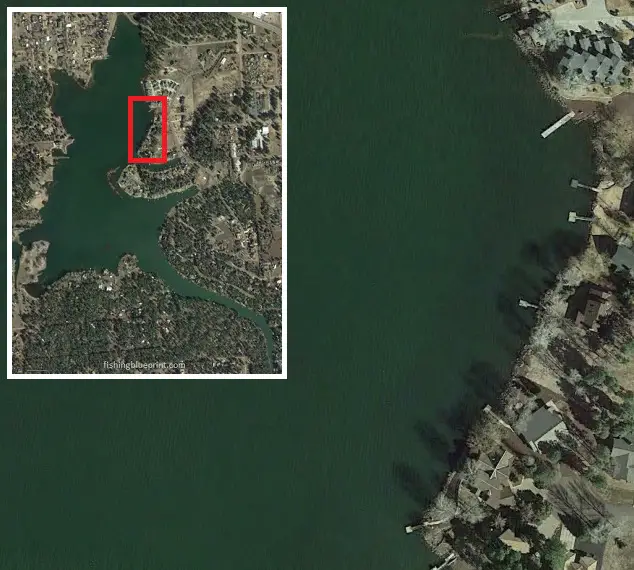
This section features several sections of long rocky bank stretches. The banks are characteristically very steep and made from large chunk rock to boulder-sized substrate.
Naturally, crawfish, bluegill, and minnows seek shelter in this area.
Given this embankment’s large area, it’s best to focus your efforts on cuts, points, boulder piles, and on transition areas from larger rock to smaller rock size.
Effective baits for this area include: topwater lures, buzzbaits, crankbaits, spinnerbaits, umbrella rigs, chatterbaits, jerkbaits, underspin jigs, swim jigs, hair jigs, and soft plastic swimbaits perform well here in breezy conditions.
In contrast, slower moving baits such as drop shot, football jigs, tubes, wacky rig, Texas rig, Neko rigs, and Carolina rigs can be phenomenal when the conditions are calm or the bass are holding close to the rocks.
Located: northeast end of the lake
Structural features: chunk rock banks
Best species to target: largemouth bass, smallmouth bass, northern pike
Most effective way to fish this spot: boat, kayak, float tube, shoreline (if you own it)
How To Catch Fish In Rainbow Lake
Rainbow Trout
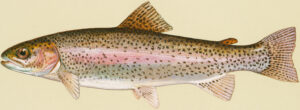 Arizona Game & Fish Department grow and stocks local lakes and reservoirs like this lake with Rainbow Trout.
Arizona Game & Fish Department grow and stocks local lakes and reservoirs like this lake with Rainbow Trout.
Due to this lake being relatively unpressured, deep, and colder, and most other desert reservoirs, the stocked trout do very well.
Since the trout are produced in local fisheries, they are healthy and have no limit on the amount of trout that can be consumed.
Typically trout are stocked twice a week, however, it can vary.
The best spinners are: Bang-Tail (size 018), Blue Foxes (blade size-0), Kastmasters (1/16-ounce), Panther Martins spinners, Little Cleo spoons (1/16-ounce), and Shyster spinners (size 018).
General Trout Details
Spawn: March-May
Food: insects and crustaceans.
Arizona State Record: 15 lb. 9.12 oz. 32.5 in., Willow Springs Lake Harold Wright, Sun City 9/29/06
Table Quality: Depending on the fishes diet, the meat can be white to orange-red in color. The meat is firm, flaky, and is considered excellent eating.
Angling techniques:
- Fish attractor such as a flasher or a dodger – great when trolling.
- Trolling spoons such as a Krocodile spoon, Super Duper, Crippled Herring, Cast Champ, or Hus-Lure – simple, easy to use, can be trolled or cast-retrieved at any speed.
- Inline spinners such as the Bang-Tail and Shyster – gets a ton of bites.
- Minnow style baits such as the Luhr-Jensen Quick Fish and the Rapala BX minnow – known to hook up giant fish.
- Streamers and flies if the water is really clear or if the conditions are calm.
- Real or artificial corn – great because it will never spoil or mold over.
- Natural salmon eggs – it’s hard to beat natural salmon eggs when trout are eating salmon eggs, they’ll eat up jars of this stuff!
- Artificial salmon eggs – great because they float off the bottom – ideal in rocky or grassy conditions.
- Real worms – such as meal worms or nightcrawlers.
- Artificial worms – great for trolling and will never die.
- Dry flies (floating flies) – The insects that land, float, or live on top of the water, which are represented by dry flies.Investing in a kit gives you a wide assortment of flies and a good selection of types and sizes allow you to quickly adjust to any situation.
- Wet flies (sinking flies) – Wet flies imitate insects that develop and inhabit below the water level before emerging and rising to the surface. Investing in a kit gives you a wide assortment of flies and a good selection of types and sizes allow you to quickly adjust to any situation.
- Woolly bugger flies – One of the most popular fly patterns ever is the Woolly Bugger. These mimic small fish, leeches, larvae, and worms. Investing in a kit gives you a wide assortment of flies and a good selection of types and sizes allow you to quickly adjust to any situation.
Steamer flies – They can also mimic larger animals found in streams and rivers, including crawfish, larger leeches, and smaller fish. Investing in a kit gives you a wide assortment of flies and a good selection of types and sizes allow you to quickly adjust to any situation.
- **The number one key to successful trout fishing, is to use light line (2 to 6 pound) and small hooks (10-14 sizes), and small sinkers
Largemouth Bass
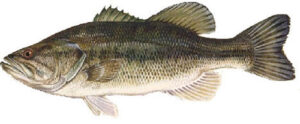 The Largemouth bass is a carnivorous member of the sunfish family. Most lakes hold the Northern strain species, however the Roosevelt chain lakes have been stocking the lakes with Florida strain species of largemouth bass.
The Largemouth bass is a carnivorous member of the sunfish family. Most lakes hold the Northern strain species, however the Roosevelt chain lakes have been stocking the lakes with Florida strain species of largemouth bass.
The Northern strain is thought to be considered more aggressive and offers a better fight than their Florida strain cousins. Whereas, the Florida strain can grow to an enormous size.
Listed below are a handful of facts, top spots, and best lures to use to help you out…
If you’re still not sure how to catch a bass, do worry. A complete section on Bass Fishing 101 was written to help you out. In that section, you’ll learn about the top ways to get you catching bass fast.
Read more: Beginner’s Guide To Bass Fishing Basics – Tips, Secrets & Things To Avoid
General Largemouth Bass Details
Spawn: Spring, March-May
Food: Shad, bluegill, crayfish
Arizona State Record: 16 lb. 7.68 oz. 28.0 in., Canyon Lake Randall E. White, Mesa 4/22/97
Table Quality: Decent. Firm white meat.
Angling techniques:
Smallmouth Bass
 Smallmouth bass are a sibling species closely related to largemouth bass. They have a pretty brown/golden color and carry the nickname of “bronzeback”. There are a few physical features that make it different from the largemouth bass. Aside from being bronze in color, they will have gray-brown vertical bands and the most defining feature is the jaw does not extend past its eye.
Smallmouth bass are a sibling species closely related to largemouth bass. They have a pretty brown/golden color and carry the nickname of “bronzeback”. There are a few physical features that make it different from the largemouth bass. Aside from being bronze in color, they will have gray-brown vertical bands and the most defining feature is the jaw does not extend past its eye.
Overall, smallmouth bass are most likely going about half the size of largemouth bass. However, pound for pound, a smallmouth can be incredibly aggressive and will put up an amazing fight.
General Smallmouth Bass Details
Spawn: March-May
Food: fish, crustaceans.
Arizona State Record: 6 lb. 4.48 oz. 21 in. Lake Havasu Sue Nowak, 2/23/17
Table Quality: Similar to a largemouth bass it’s firm, white, flaky, mild-tasting
Angling techniques:
- Finesse jigs
- Mojo Rig
- Neko Rig
- Small crankbaits
- Football Jigs
- Soft plastic swimbaits
- Jerkbaits
- Chatterbaits
- Swim jigs
- Hair jigs
- Underspin jigs
- Drop shot plastic worms
- Tubes
- Streamer flies.
- Live baits: minnows, hellgrammites, and crayfish
Black Crappie
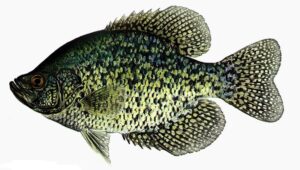 Introduced to Arizona in 1905, this lakes holds black crappie. These fish tend to linger over submerged brush and timber and are found in schools.
Introduced to Arizona in 1905, this lakes holds black crappie. These fish tend to linger over submerged brush and timber and are found in schools.
The black crappie are much more tolerant in cooler water than their white crappie cousins.
Black crappie can be described as having an irregular black dots and blotched on the back and have more of a “silvery-olive” background.
Average weight of a crappie in is going to be 0.75-pounds, however electro-netted samples show they can get over 3-pounds in size!
General Crappie Details
Spawn: April – mid-June
Food: Larvae, small fish, and crustaceans. Threadfin shad make up their main diet.
Arizona State Record: 4 lb. 10.0 oz. –in., San Carlos Lake John Shadrick, Mammoth 1959
Table Quality: The meat is excellent. It’s firm, flaky and white.
Angling techniques:
- Live minnows under bobbers
- Crappie jigs
- Crappie tubes
- Silver spoons
- Spinners
Catfish
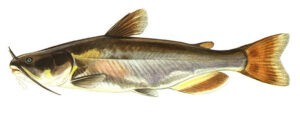
Channel catfish weight will range from 0.5-to-15-pounds in and of the Roosevelt chain lakes, including Canyon Lake. However, the average weight will be between 1-4-pounds.
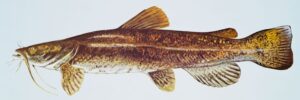
Conversely, “smaller” flathead catfish will weigh in at 15-pounds and can grow around 75-pounds. A flathead survey conducted in 2016 and 2020 caught a flathead that weighed over 48-pounds!
General Catfish Details
Spawn: March-June
Food: Carp, bluegill
Arizona State Record:
Channel catfish – 33 lb., 5.76 oz., 39.5 in., Upper Lake Mary Carson Pete, 3/26/17
Flathead catfish – 76 lb. 8.64 oz., 53.5 in., Bartlett Lake Eddie Wilcoxson, Surprise 04/13/13
Table Quality: Soft white meat. In the summer the meat will taste muddy.
Angling techniques:
Flathead catfish:
- live bait such as smaller carp, full sized bluegill, or tilapia
Channel catfish:
- chicken liver
- hotdogs
- stink bait
- small bluegill
- small carp
Bluegill/ Sunfish
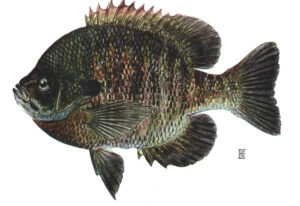 Introduced to Arizona in 1932, the bluegill has teal-blue coloring on the bottom portion of the chin and gill plate. It also has a solid black opercula flap just behind the gill plate.
Introduced to Arizona in 1932, the bluegill has teal-blue coloring on the bottom portion of the chin and gill plate. It also has a solid black opercula flap just behind the gill plate.
Bluegill are found on the shoreline and prefer nearby structures. Bluegill are incredibly aggressive and will quickly attack anything that looks like it could be eaten. Due to their aggressive behavior, they are one of the easiest fish to catch and are a great way to introduce someone to fishing.
Spawn: April and May
Food: Small fish and insects
Arizona State Record: 3 lb. 15.68 oz. 15.75 in., Goldwater Lake. Christopher Ray Mapes, Prescott Valley 5/2/04
Table Quality: Firm, white meat
Angling techniques:
- Worms
- Dough balls
- Slim jim sausages pieces on a small hook (not lying… it really works)
- Small spinners
- Trout flys
Carp
Carp are an oily freshwater species of fish and are native to Europe and Asia. Carp are considered invasive to the United States.
The big, hard fighting fish are really fun to catch. Many anglers will fish for carp at night and bowfishing from the shore or from a boat!
Carp can be consumed however, their muddy taste and boney meat make it one of the least desirable fish to eat.
Spawn: March-June
Food: algae, plant matter, fish eggs, insects, aquatic worms, small crustaceans (snails), and small crayfish
Arizona State Record: 37 lb. 0.0 oz. 40.0 in., Bartlett Lake Jonathan Gardner, Phoenix 8/8/87
Table Quality: Poor. Soft white flesh that is muddy and riddled with bones
Angling techniques:
- Dough balls
- Corn
- Worms
- Cherry tomatoes (not kidding)
- Commercial carp baits
Boat Ramps at Rainbow Lake
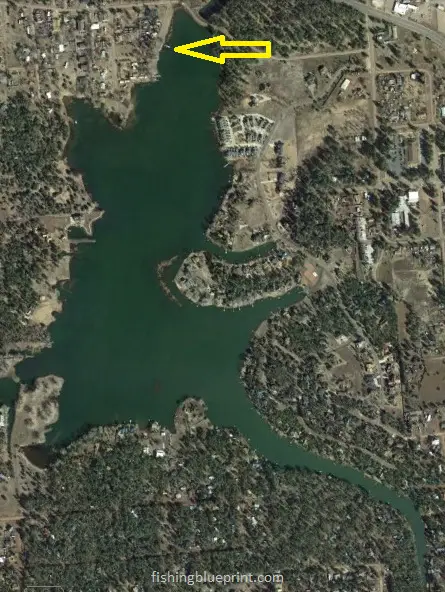
Rainbow Lake Boat Ramp
Location: Southwest corner of Lakeview Lane and Rainbow Lake Lane.
Phone number: none
Lanes: 1
Groceries available: no
Gas: no
Bathrooms: no
Showers: no
Electric: no
Camping nearby: no
Top Tackle Shops Near Rainbow Lake
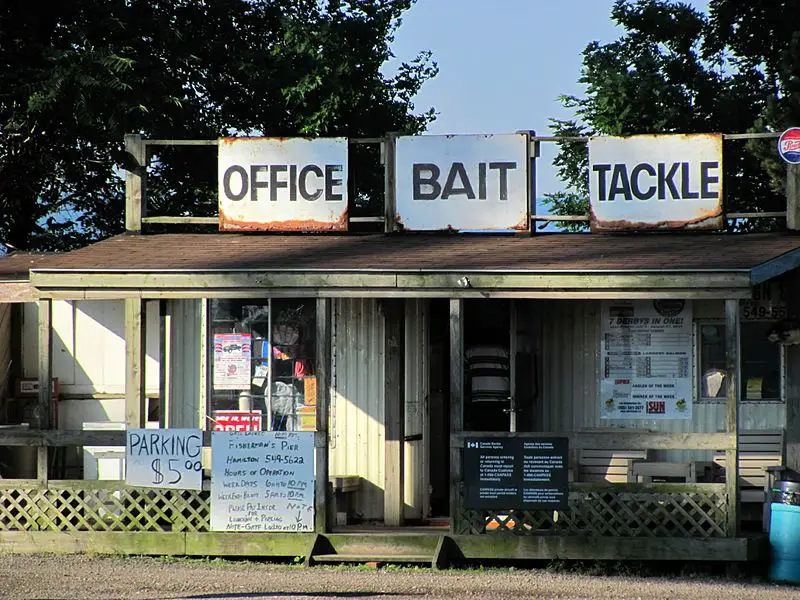
Sportsman’s Warehouse
4421 S White Mountain Rd, Show Low, AZ 85901
(928) 537-0800
White Mountain Bait & Tackle
1300 W McNeil, Show Low, AZ 85901
(928) 537-2402
M&M Kayaks
1488 E White Mountain Blvd, Pinetop, AZ 85935
(928) 358-1183
Hon Dah Ski & Outdoor Sport
787 AZ-260, Pinetop, AZ 85935
(928) 369-7669
Places To Camp, Lodging, And RV Parks
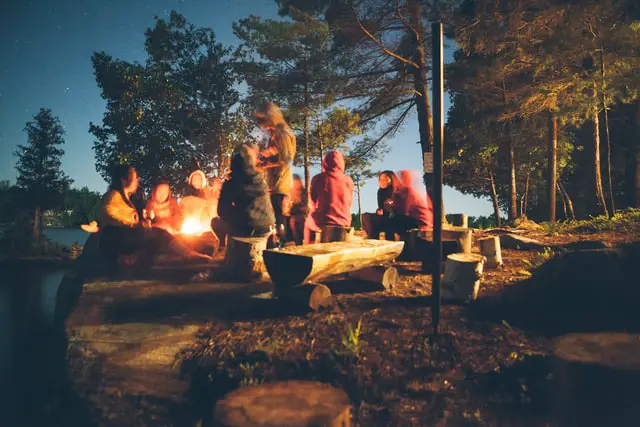
While there is no camping directly on Rainbow Lake, there is camping nearby.
Fool Hollow Lake Recreation Area
Show Low Lake Campground
- 5800 Show Low Lake Rd, Lakeside, AZ 85929
- (928) 537-4126
- Sites: 73
- RV sites: available
- Tent sites: available
- Nearby boat ramp: Yes
- Groceries available: Yes
- Gas: No
- Bathrooms: Yes
- Showers: Yes
- Electric: Yes
- Campground map – click here
Other Activities You Can Do at Rainbow Lake
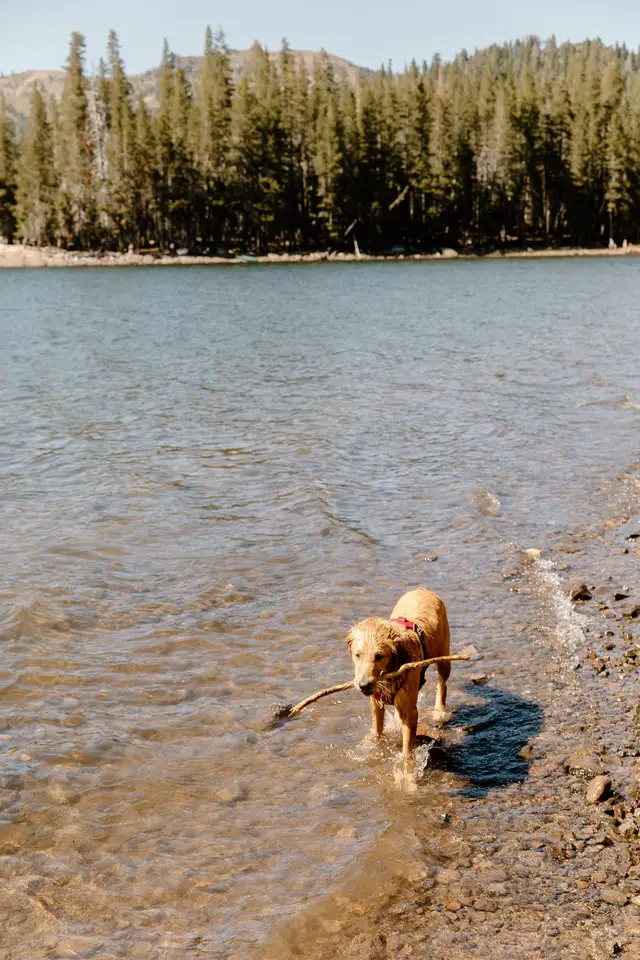
For those who want to chill at the lake…
- Biking
- Bird watching
- Boating
- Skiing
- Kayaking
- Canoeing
- Paddleboarding
- Sailing
- Swimming
- Camping
- Horseshoes
- Picnicking
- Hiking
- Gentle walking trails
- Nature photography trails
- Wildlife viewing
- Mountain biking
- Stargazing
- and most importantly… relaxing.
Other Arizona Related Fishing Articles
- Top 20 Best Places To Fish In Arizona 2023
- Interactive AZ Fishing Map 2023 – Where To Go Fishing In Arizona
- How much does a Arizona fishing license cost?
- Best Tackle Shops In Phoenix Arizona 2023
- Best Bass Fishing Lakes in Arizona 2023 (Voted by Local Anglers!)
- Alamo Lake Fishing Report 2024
- Apache Lake Fishing Report 2024
- Ashurst Lake Fishing Report 2024
- Bartlett Lake Fishing Report 2024
- Bear Canyon Lake Fishing Report 2024
- Big Lake Fishing Report 2024
- Blue Ridge Reservoir Fishing Report 2024
- Canyon Lake Fishing Report 2024
- Chevelon Lake Fishing Report 2024
- Kinnikinick Lake Fishing Report 2024
- Lake Havasu Fishing Report 2024
- Lake Mary Fishing Report 2024
- Lake Pleasant Fishing Report 2024
- Patagonia Lake Fishing Report 2024
- Rainbow Lake Fishing Report 2024
- Roosevelt Lake Fishing Report 2024
- Saguaro Lake Fishing Report 2024
- Show Low Lake Fishing Report 2024
- Sunrise Lake Fishing Report 2024
- Willow Springs Lake Fishing Report 2024
- Woods Canyon Lake Fishing Report 2024
George Servinson
My name is George and I'm been fishing my entire life and love all things outdoors. My passion is helping anyone catch more fish. The newest things I've been doing lately is learning how to break down and clean all my reels, teaching my boy how to kayak fish, and bushcraft wilderness survival.

